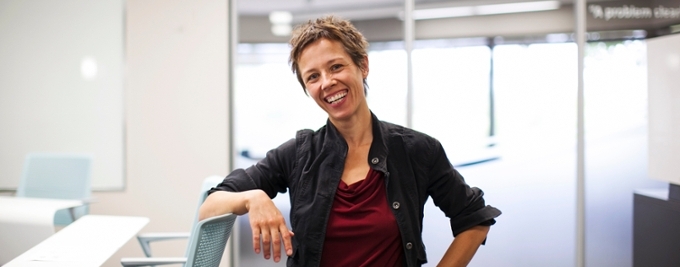
Art Audiences in Need of Renaissance
Expectations are very high for the Remai, the new Saskatoon art gallery scheduled for completion in early 2016.
By Ryan Boivin, graduate student fellow with the U of S College of Graduate Studies and Research.Student researches factors in declining art audiences ...
Expectations are very high for the Remai, the new Saskatoon art gallery scheduled for completion in early 2016.
“If the trend towards declining attendance at North American art museums holds true for Saskatoon, the Remai’s greatest challenge will be to innovate its programming in ways that attract new audiences,” says Jen Budney, Associate Curator at the Mendel Art Gallery and PhD student in the Johnson-Shoyama Graduate School of Public Policy, University of Saskatchewan campus.
Budney is studying how decision-making in public art museums affects innovation, and particularly the museum’s engagement with culturally diverse, including Aboriginal, audiences. Once complete, her results will have implications for mid-sized art museums seeking to attract audiences outside of the white, well-educated class that forms an increasingly smaller segment of society.
In the United States, University of Pennsylvania sociologist Mark Stern and the National Endowment for the Arts found that U.S. art audiences as a whole are declining.
Canada seems to be following a similar trend. In the last year the Art Gallery of Windsor laid off 12 of its 17 staff, and the Art Gallery of Alberta required a $500,000 bail out from the City of Edmonton.
"Jen's unique combination of real-world experience and academic background will enable her to develop some critical insights into this important public policy issue," says Murray Fulton, Budney’s supervisor and JSGS professor.
Fulton goes on to note that Budney’s work may offer a significant contribution to the literature on why organizations such as museums and galleries have trouble making the changes they need to remain relevant.
Budney began studying practices that foster inclusion or exclusion in the visual arts when researching the barriers to participation confronting black artists in Brazil.
“Art museums cater to elites all around the world. It’s a question of degree, and what’s acceptable to Canadians. My interest in this subject is grounded in my belief that the arts can be a powerful engine for personal and social transformation, including cross-cultural and cross-political dialogue,” says Budney.
She says factors such as accessibility to public transport, proximity to cultural hubs and affordability influence the volume of art audience attendance. But the choices a museum makes in what it chooses to exhibit and how it chooses to target and engage audiences are just as important. The trend of declining attendance indicates that art museums are not innovating in this area at a rate that is in step with changes in the larger society. Her hope is that further examining decision-making processes in mid-sized art museums will lead to better organizational priorities and strategies for art museums and their funders.
Budney plans on continuing her work in Canadian art museums, with previous held positions including: curator for the Kamloops Art Gallery, artistic director of Gallery 101 in Ottawa, news editor of Flash Art Magazine in Milan Italy, and program officer at the Canadian Council for Arts. Budney is in receipt of a Dean’s Scholarship, funded through the U of S College of Graduate Studies and Research.

